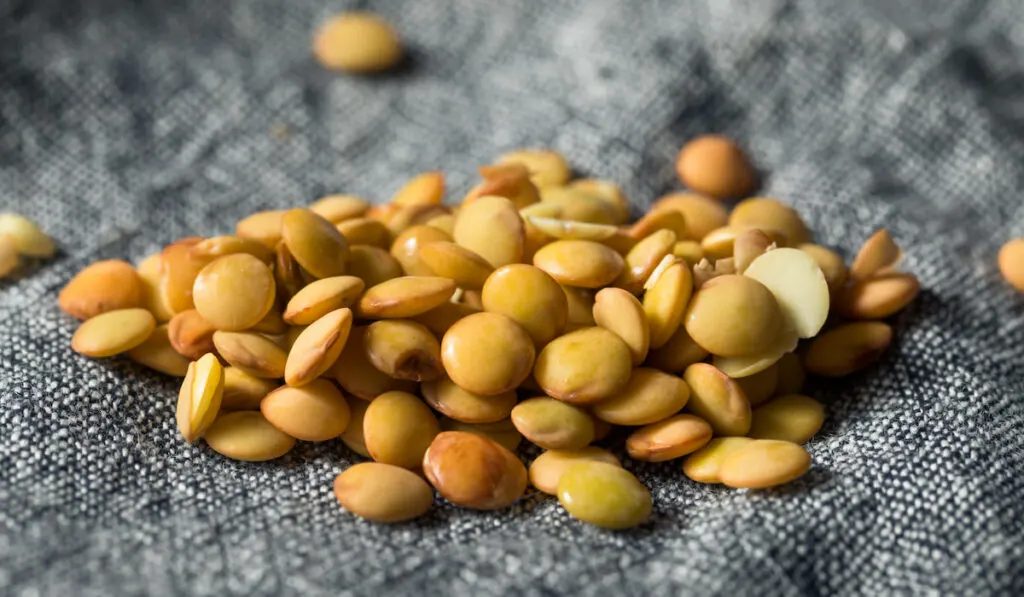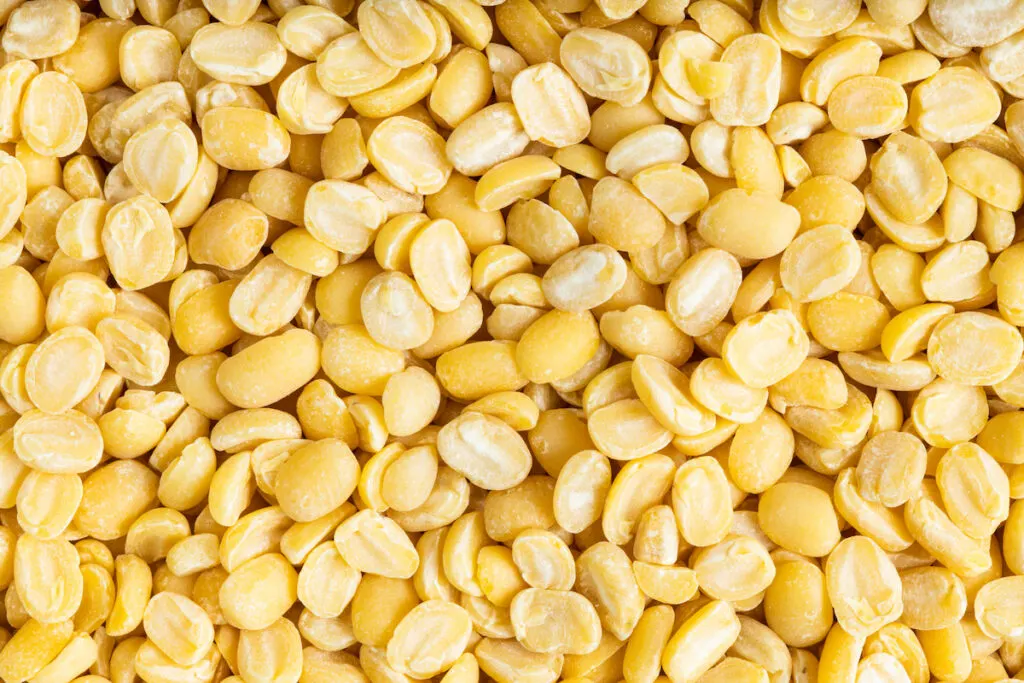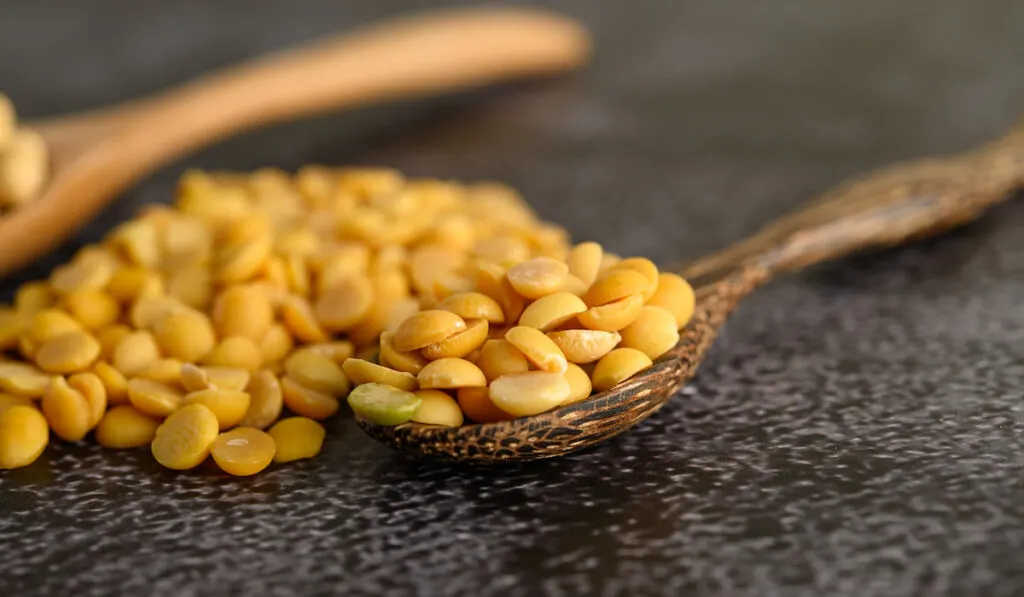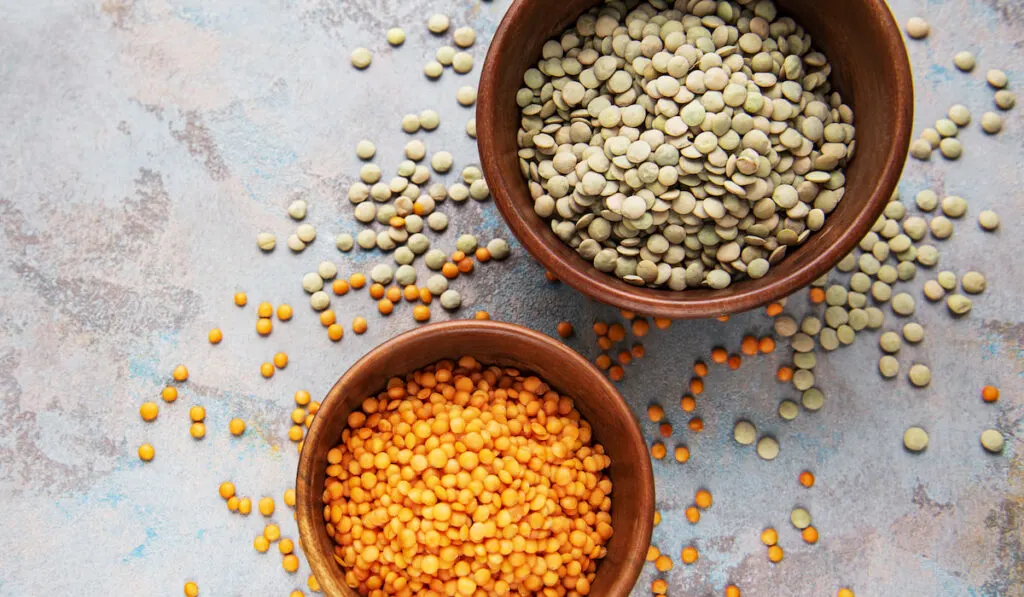Lentils are an essential part of any healthy and balanced diet. This article will discuss the two types of yellow lentils, Mung/Moong dal and Toor dal, as well as their origins, uses, and differences.
Lentils are packed with fiber, vitamins, and minerals. While any lentil is a welcomed addition to your meal, not all lentils are created equal. Today you’ll learn what makes yellow lentils stand out.

Table of Contents
What Are Yellow Lentils?
A lentil is a high-protein pulse, or edible seed, from a legume plant. These legumes usually grow to be around 16 inches tall and are harvested in August and September (source).
After harvesting, the seeds are then dried out before being packaged and sold. All lentils must be soaked before cooking and eating.
More than half of the world’s lentils are cultivated in either Canada or India, with many lentils being exported worldwide.
While there is a debate as to how many categories of lentils there really are, they are typically divided by their color. They can be found in four main categories: red, brown, green, and yellow.
Yellow lentils are most commonly grown and used in India as dal. Dal includes any dish made with lentils, specifically with split pulses.
Mung/Moong Dal

Mung Dal, also spelled as Moong Dal, is created with Mung Beans. Contrary to its name, these beans are classified as a pulse, which is why they end up being called yellow lentils.
Origin
Mung Beans have been harvested in India for thousands of years. They have since spread to China and Southeast Asia, and are sold in health food stores across the U.S. (source).
When grown and harvested, Mung hulls—or outer layers—are initially green-colored. After they are dehulled and split, they are left with only the yellow pulse.
Use
Yellow lentils such as Mung Beans can be used in sweet and savory dishes alike. They are often sold fresh, as sprouts, or dried in health food stores.
While they aren’t as popular in the U.S. as they are in India, there are plenty of dishes that benefit from the addition of yellow lentils. Salads, soups, and stir-frys are the most common meals that include Mung Beans.
Mung Beans are packed with nutrients, and one cup of beans only contains around 200 calories (source). They are low in fat, with high protein and fiber. Mung Beans are linked with possibly reducing the risk of heart disease, heatstroke, blood pressure, and blood sugar, all while aiding digestive health.
Toor Lentils

Toor lentils are split Pigeon Peas. Lentils and peas are both members of the legume family; however, split peas are dried field peas, whereas lentils are the dried seeds found in a pod.
Origin
Pigeon Peas originated in India and West Africa. They are grown primarily in the tropics and subtropics, such as India, Malaysia, the Caribbean, East and West Africa.
Most Pigeon Pea pods are picked by hand. They are then dehulled and split to create the yellow lentils known as Toor dal that many know and love.
Use
Toor dal is the perfect thickener for curries, stews, and soups. It can be eaten both raw or cooked. Caribbean dishes often use Pigeon Peas in stews. They can also be added to slaws or used to replace most other lentils called for in various recipes (source).
Pigeon Peas are packed with nutritional value, much like their yellow lentil counterpart, Mung Beans. They have high fiber, protein, phosphorus, and potassium, making them a great addition to any healthy diet.
Pigeon Peas and their plants have also been used throughout history as a holistic approach for treating coughs, diarrhea, and even wounds (source).
Difference Between Yellow Lentils, Beans, and Peas
On many occasions, people will say lentils, beans, or peas when they are referring to another legume. While they may be technically incorrect, these three legumes do have a lot in common.
Lentils, beans, and peas are all legumes and they are all “pulses”, or seeds. All of these grow inside of a pod and can be sold dried, canned, fresh, or cooked.
Lentils and beans are both a high source of protein, whereas peas are a good source of other vitamins and minerals (source).
Visually, lentils are flatter than peas and beans. Beans are kidney-shaped, whereas peas are shaped like small spheres. Lentils and beans come in various colors, whereas peas are generally green and, more rarely, yellow.
When dehulling and splitting beans and peas, they may begin to resemble lentils a bit more.
FAQs
Here are some common questions about yellow lentils.
How many types of lentils are there?

Lentils are typically split into categories depending on their color: red, brown, green, or yellow. “Yellow lentils”, such as Mung and Toor dal, are actually beans and peas that have been dehulled and dried.
What is the difference between lentils, legumes, beans, and peas?
Lentils, beans, and peas are all legumes. They are all the “pulses”, or seeds, of their legume. They have different properties, shapes, and colors. All three are high sources of vitamins and minerals.
What are the types of yellow lentils?
Mung dal and Toor dal are the typical “yellow lentils”. Technically speaking, neither are planted as actual lentils. Mung dal comes from the green Mung Bean, which is then dehulled and dried, leaving the “yellow lentil”. Toor dal comes from yellow Pigeon Peas, which are also dehulled, split, and dried before consumption.
What are yellow lentils used for?
Yellow lentils can add flavor to and increase the healthiness of any meal. Mung dal is often used for salads, soups, and stir-frys. Toor dal, on the other hand, is often used to thicken curries. It can also be added to Caribbean stews, slaws, and salads or used as a replacement for other lentils in most recipes.
What are the health benefits of yellow lentils?
Yellow lentils are packed with fiber, vitamins, and minerals. Mung dal has low fat, high fiber, and aids in nourishing healthy gut bacteria (source). Toor dal is high in protein, phosphorous, and potassium (source).
Resources
When learning about lentils, a healthy diet, and plant cultivation, it’s important to learn from a wide array of sources. Here are the sources referenced in this article.
- https://www.myplate.gov/eat-healthy/protein-foods/beans-and-peas
- https://www.hsph.harvard.edu/nutritionsource/food-features/lentils/
- https://www.gov.mb.ca/agriculture/crops/crop-management/lentils.html
- https://www.webmd.com/food-recipes/benefits-lentils
- https://www.healthline.com/nutrition/mung-beans
- https://www.dalrrd.gov.za/Portals/0/Brochures
- https://pfaf.org/user/Plant.aspx?LatinName=Cajanus+cajan
- https://www.urmc.rochester.edu/encyclopedia/content.aspx?contenttypeid=76;contentid=16102-1
- https://www.dalrrd.gov.za/Portals/0/Brochures%20and%20Production%20guidelines/Pigeon%20peas%20-%20Brochure.pdf
